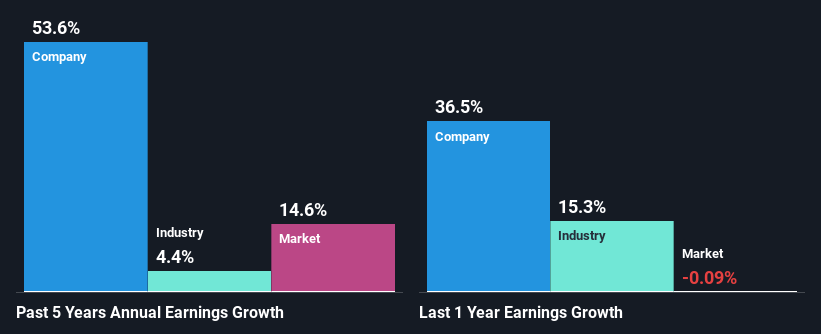Are Strong Financial Prospects The Force That Is Driving The Momentum In Coca-Cola Consolidated, Inc.'s NASDAQ:COKE) Stock?
Coca-Cola Consolidated (NASDAQ:COKE) has had a great run on the share market with its stock up by a significant 46% over the last three months. Given that the market rewards strong financials in the long-term, we wonder if that is the case in this instance. Specifically, we decided to study Coca-Cola Consolidated's ROE in this article.
ROE or return on equity is a useful tool to assess how effectively a company can generate returns on the investment it received from its shareholders. In short, ROE shows the profit each dollar generates with respect to its shareholder investments.
See our latest analysis for Coca-Cola Consolidated
How Is ROE Calculated?
The formula for return on equity is:
Return on Equity = Net Profit (from continuing operations) ÷ Shareholders' Equity
So, based on the above formula, the ROE for Coca-Cola Consolidated is:
30% = US$451m ÷ US$1.5b (Based on the trailing twelve months to September 2023).
The 'return' is the profit over the last twelve months. One way to conceptualize this is that for each $1 of shareholders' capital it has, the company made $0.30 in profit.
What Is The Relationship Between ROE And Earnings Growth?
Thus far, we have learned that ROE measures how efficiently a company is generating its profits. We now need to evaluate how much profit the company reinvests or "retains" for future growth which then gives us an idea about the growth potential of the company. Assuming all else is equal, companies that have both a higher return on equity and higher profit retention are usually the ones that have a higher growth rate when compared to companies that don't have the same features.
A Side By Side comparison of Coca-Cola Consolidated's Earnings Growth And 30% ROE
First thing first, we like that Coca-Cola Consolidated has an impressive ROE. Second, a comparison with the average ROE reported by the industry of 16% also doesn't go unnoticed by us. So, the substantial 54% net income growth seen by Coca-Cola Consolidated over the past five years isn't overly surprising.
As a next step, we compared Coca-Cola Consolidated's net income growth with the industry, and pleasingly, we found that the growth seen by the company is higher than the average industry growth of 4.4%.
Earnings growth is a huge factor in stock valuation. It’s important for an investor to know whether the market has priced in the company's expected earnings growth (or decline). This then helps them determine if the stock is placed for a bright or bleak future. Is Coca-Cola Consolidated fairly valued compared to other companies? These 3 valuation measures might help you decide.
Is Coca-Cola Consolidated Using Its Retained Earnings Effectively?
Coca-Cola Consolidated's three-year median payout ratio to shareholders is 3.8%, which is quite low. This implies that the company is retaining 96% of its profits. So it looks like Coca-Cola Consolidated is reinvesting profits heavily to grow its business, which shows in its earnings growth.
Additionally, Coca-Cola Consolidated has paid dividends over a period of at least ten years which means that the company is pretty serious about sharing its profits with shareholders.
Conclusion
On the whole, we feel that Coca-Cola Consolidated's performance has been quite good. Specifically, we like that the company is reinvesting a huge chunk of its profits at a high rate of return. This of course has caused the company to see substantial growth in its earnings. If the company continues to grow its earnings the way it has, that could have a positive impact on its share price given how earnings per share influence long-term share prices. Not to forget, share price outcomes are also dependent on the potential risks a company may face. So it is important for investors to be aware of the risks involved in the business. To know the 1 risk we have identified for Coca-Cola Consolidated visit our risks dashboard for free.
Have feedback on this article? Concerned about the content? Get in touch with us directly. Alternatively, email editorial-team (at) simplywallst.com.
This article by Simply Wall St is general in nature. We provide commentary based on historical data and analyst forecasts only using an unbiased methodology and our articles are not intended to be financial advice. It does not constitute a recommendation to buy or sell any stock, and does not take account of your objectives, or your financial situation. We aim to bring you long-term focused analysis driven by fundamental data. Note that our analysis may not factor in the latest price-sensitive company announcements or qualitative material. Simply Wall St has no position in any stocks mentioned.

 Yahoo Finance
Yahoo Finance 
